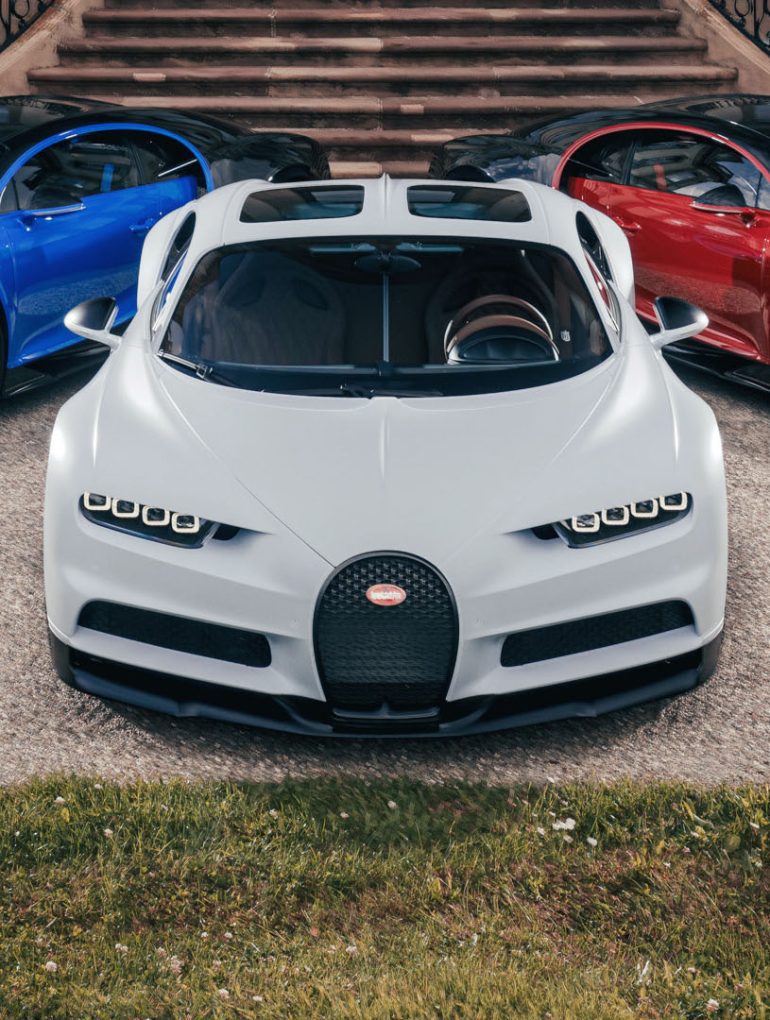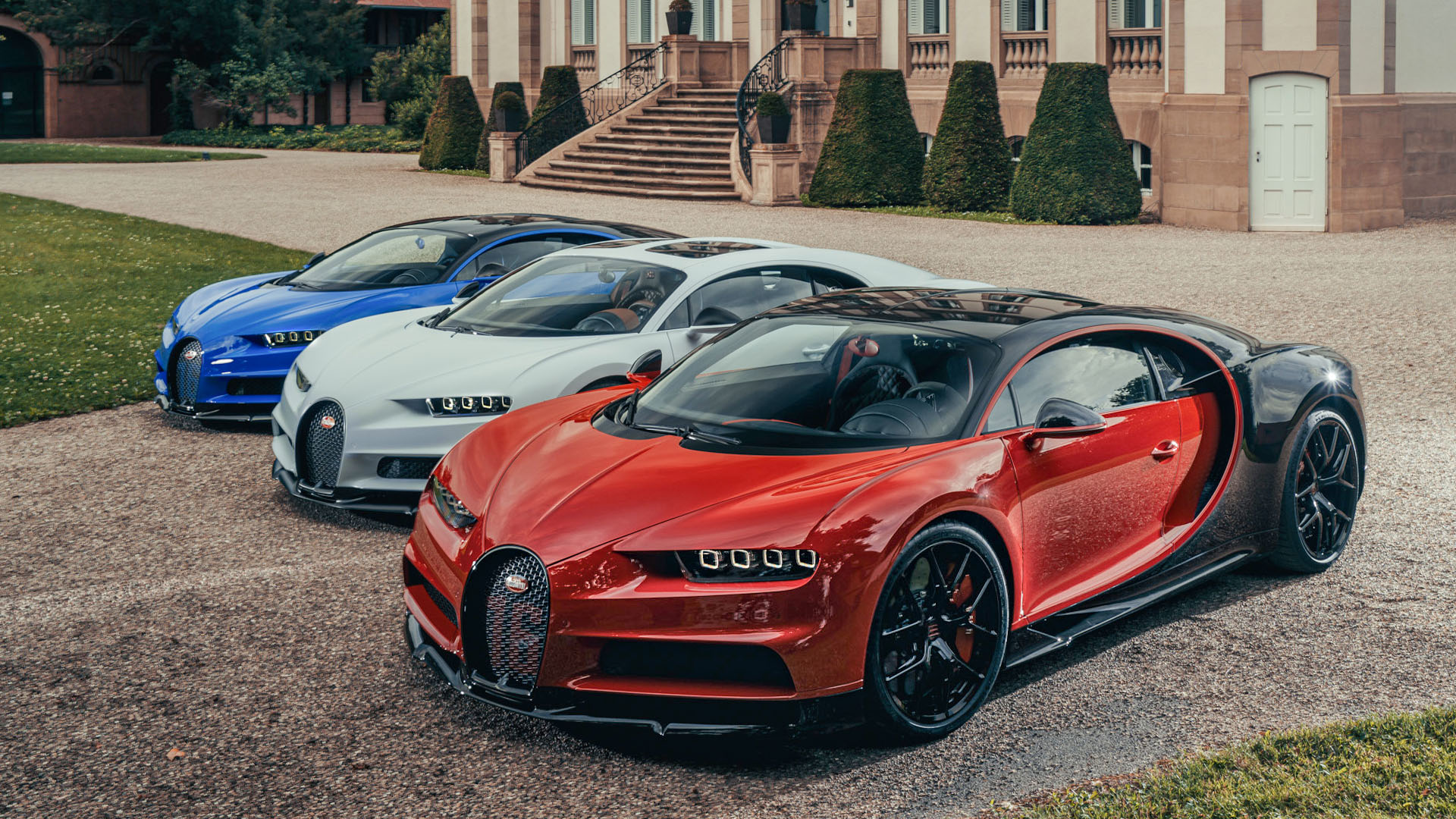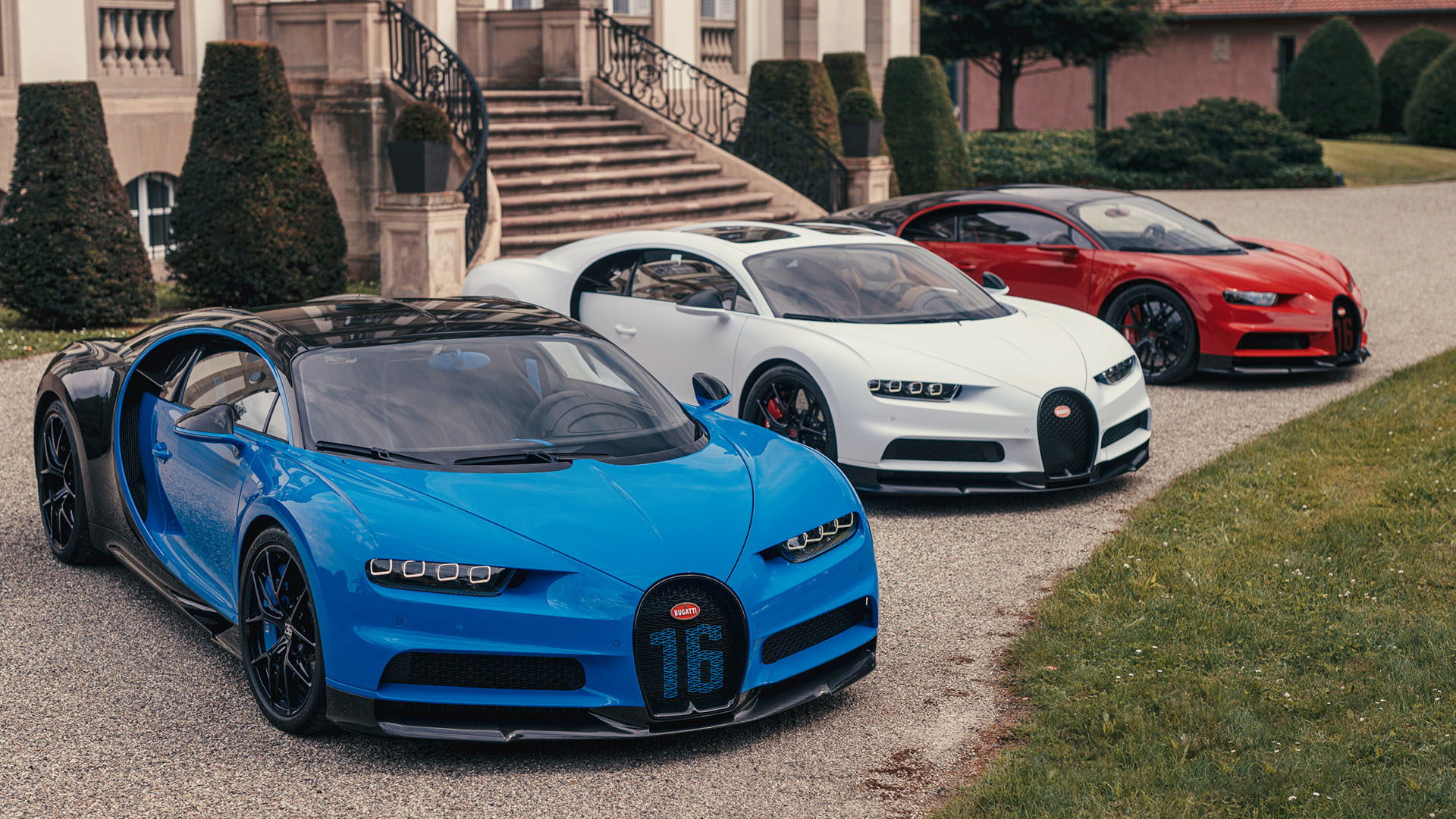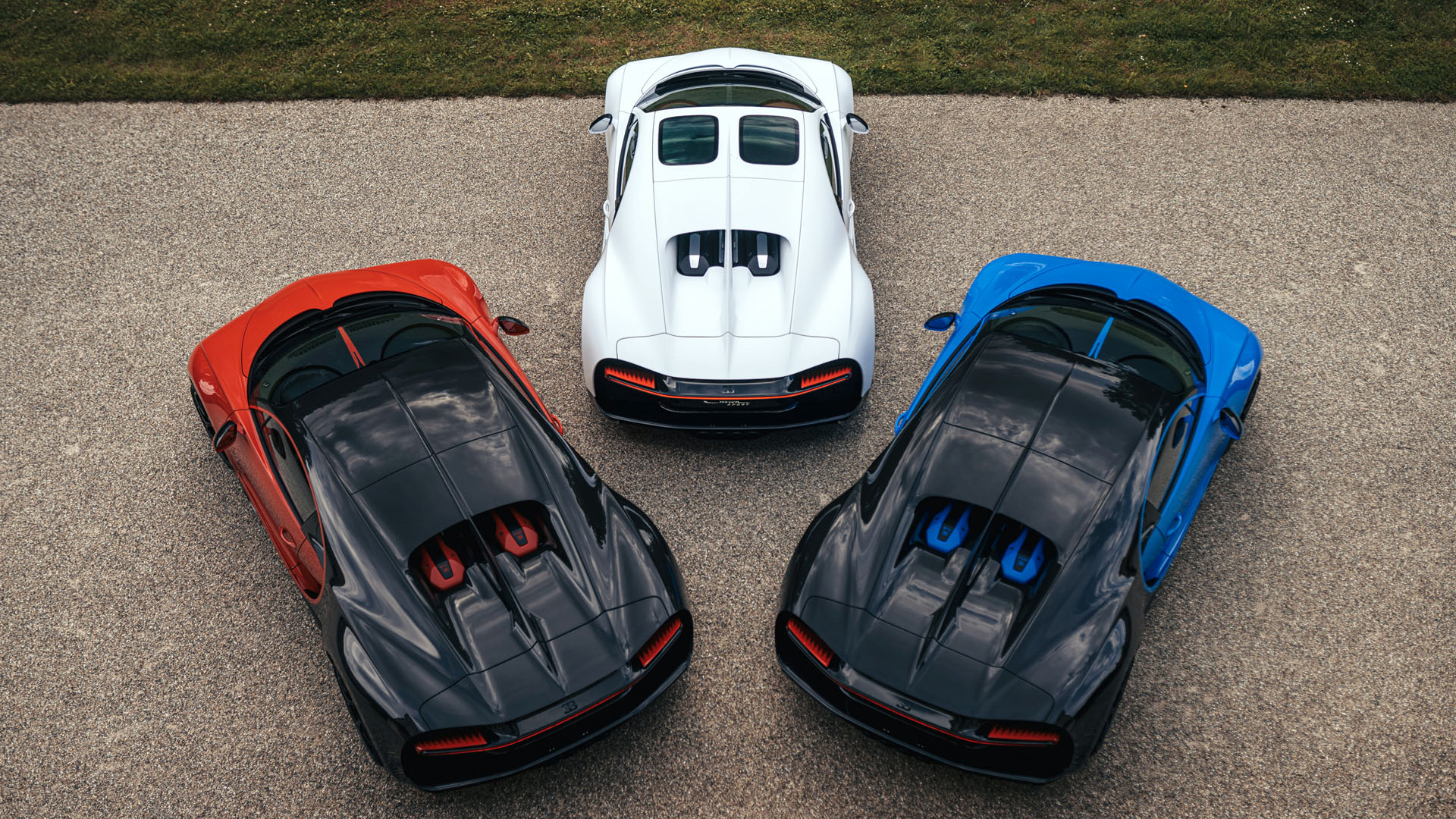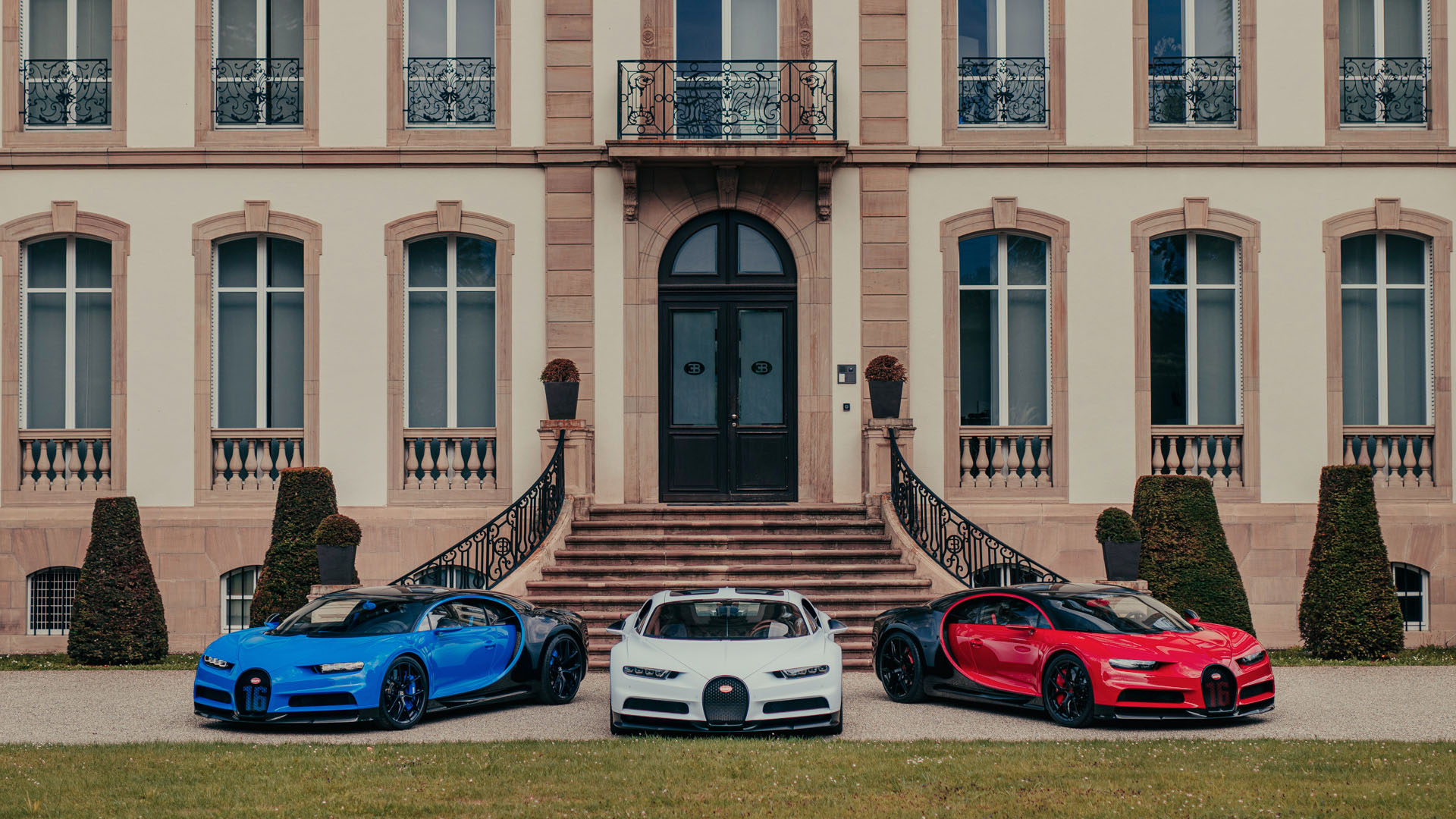Originally intended to commemorate the storming of the Bastille, July 14 is France’s most important national holiday, each year honoring the Grande Nation and its values. “As a French brand with a large proportion of French employees, we regard ourselves as part of the French identity,” says Bugatti President Stephan Winkelmann. “Molsheim stands for technical perfection and an exceptional sense for quality but also for French savoir vivre – a lifestyle that attracted and shaped Ettore Bugatti and which is reflected in our vehicles up to this day. This is what our products stand for and this will remain in the future.”
In 1909, Ettore Bugatti deliberately chose Molsheim in Alsace as the home of his company. The first car to be produced in Molsheim was the Bugatti Type 13. The brand entered into the world of motorsport and launched further light sports cars, such as the legendary Type 35. Between 1920 and 1935, Bugatti celebrated countless victories at international races with both standard models and their variants. Simultaneously, Bugatti developed touring cars such as the Type 30, Type 38, Type 44, and Type 49 – exceptional due to their design as well as their eight-cylinder engines. In 1926, Bugatti created a truly regal limousine: with a wheelbase of 4.3 meters and a total length of 6.4 meters, the Type 41 Royale became the longest and most luxurious vehicle in the world. Their versatility, ease of handling, suitability for many different driving situations, and elegant, often customized bodywork turned the vehicles from Alsace into some of Europe’s trendiest models.
Throughout his whole life, Ettore was more than just a car manufacturer; he was a multi-talented developer and a Frenchman at heart. He learned French and travelled regularly to Paris in search for inspiration. He kept company with Émile-Maurice Hermès and René Lalique. His first showroom was in the then-already-famous Avenue Montaigne in the heart of Paris. He was fascinated by the elegance, eccentricity, and excess to be found throughout France’s capital at that time. And so, Bugatti also designed all kinds of engines, trains, boats, airplanes, and sterile surgical tools in addition to his vehicles. Ettore Bugatti died on August 21, 1947 in Paris – in the heart of France. The company’s operations came to a halt with the cessation of the business in the early 1960s.
The biggest automotive exhibition in the vicinity of Molsheim
In the 1960s, brothers Hans and Fritz Schlumpf seem to have already sensed what the Bugatti brand would one day come to signify for the Alsace region once again. With their collection in Mulhouse, they not only set up the world’s largest car collection – but also the biggest Bugatti collection, thereby preserving the models, the brand, and its legendary status. Following the brothers’ insolvency, the French state took over the collection and opened the Musée National de l’Automobile in 1982. Across 25,000 square meters, the “Cité de L’Automobile” – as it is officially called today – exhibits 400 of the world’s rarest and most valuable automobiles – including around 100 Bugatti models and two of the six Type 41 Royale ever to be built.
In the late 1980s, Romano Artioli brought the company back to life – albeit only until 1995 – with the development of the EB 110. A few years later, Bugatti settled once more in Molsheim, renovating the Château St. Jean, two remises and the Orangery, and builds an ultra-modern factory, known as the Atelier, in the oval shape of the famous Bugatti Macaron. This is where the Veyron 16.4, the first hyper sports car of the modern era, was produced in 2005. Since then, the precious legacy of Ettore Bugatti has continued here with highly motivated and qualified employees who are passionate about producing the world’s best hyper sports cars. 450 Veyrons were hand-manufactured here until 2015. And since 2016, the employees in the Atelier were assembling the Chiron and its highly sought-after derivatives, the Chiron Pur Sport and Chiron Super Sport, as well as the coach-built Divo, Centodieci, and La Voiture Noire models based on a tradition Bugatti successfully brought back to life in 2018.
“I quickly grew very fond of Bugatti. The history, the products, the team, the whole region,” says Winkelmann. “We are proud of being a French brand and can well understand why Ettore Bugatti was originally attracted to the Alsace region. The national day on July 14 is something truly special to our French employees and to me personally. This is why we want to commemorate it this year with an exceptional tricolore.”
Three Chiron Sport in blue, white, red, symbolizing the French origins and Bugatti’s haute couture of the automotive industry.


